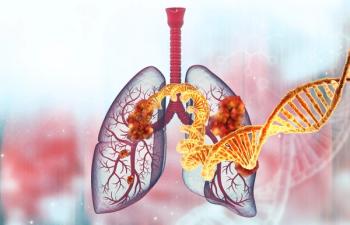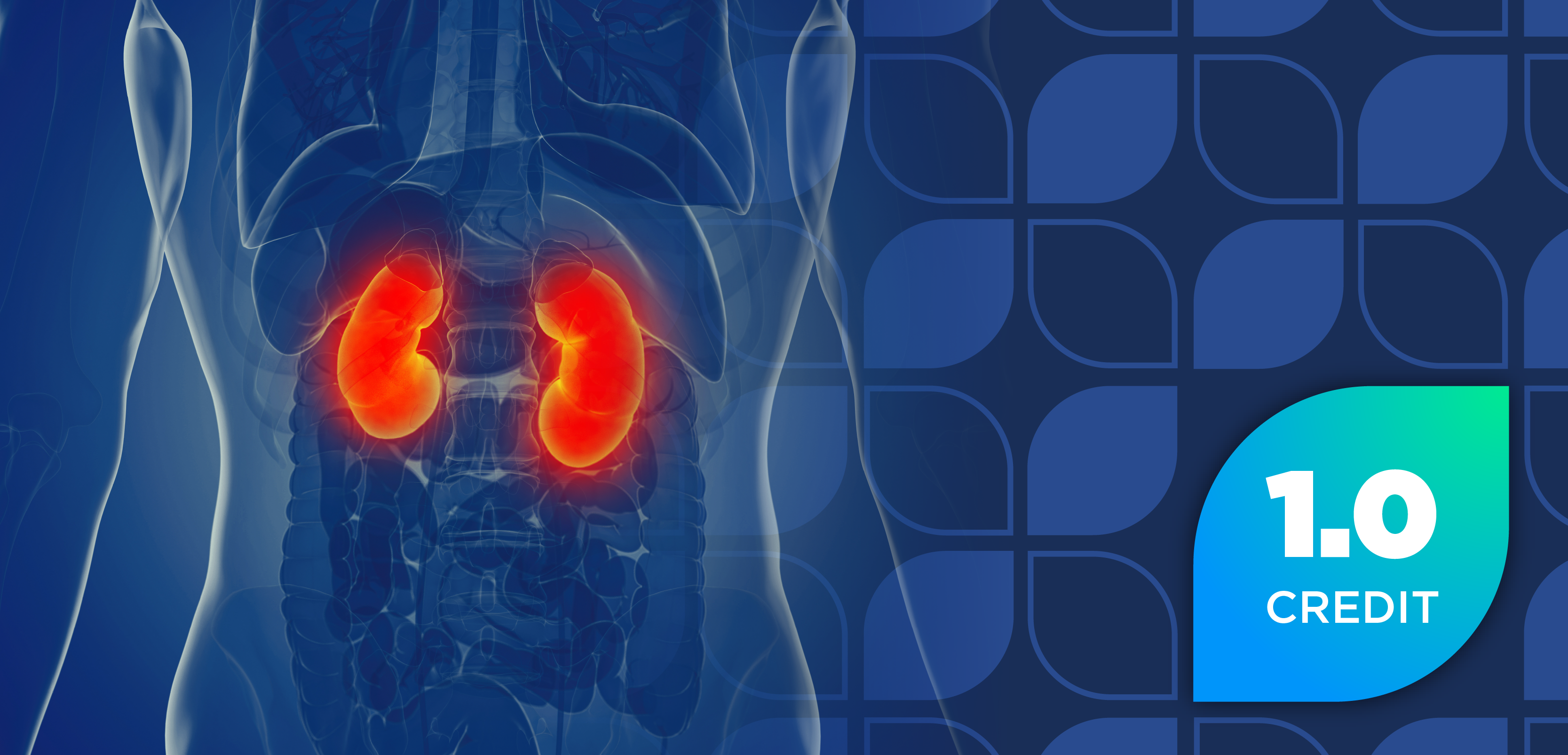
Vutrisiran Demonstrates Low Rates of Gastrointestinal Events in Patients With ATTR-CM
Key Takeaways
- Vutrisiran significantly reduces GI events in ATTR-CM and hATTR-PN patients, with a 42% lower rate compared to placebo.
- Consistent GI event reduction observed across monotherapy and baseline tafamidis treatment groups, with reductions seen as early as 3 months.
The RNA interference therapy indicated that, along with its therapeutic benefits in cardiomyopathy transthyretin-mediated amyloidosis (ATTR-CM), there was a reduced risk of GI events.
A new study shows adults with certain cardiomyopathy who took vutrisiran (Amvuttra; Alnylam Pharmaceuticals) had a lower rate of gastrointestinal events across overall, monotherapy, and baseline tafamidis (Vyndaqel, Vyndamax; Pfizer) treatment groups, according to a news release from Alnylam Pharmaceuticals.1
The study looked specifically at adult patients with cardiomyopathy of wild-type or hereditary transthyretin-mediated amyloidosis (ATTR-CM). The investigators saw consistent trends across population subgroups.1
What is ATTR-CM?
ATTR-CM is an underdiagnosed, potentially fatal disease of the heart in which transthyretin builds up in the heart, nerves, and other organs. As this occurs, the heart’s walls become stiff, making it hard for the left ventricle to pump blood, potentially leading to heart failure (HF). In wild-type ATTR-CM, there is no inherited gene causing the disease and impacts are mostly confined to the heart. In hereditary ATTR-CM, the disease runs in families, with complications possible throughout the organ system.2
Manifestations beyond the heart can encompass GI events, including abdominal pain and discomfort, diarrhea, constipation, nausea, and vomiting. With so many possible presentations, ATTR-CM is difficult to accurately diagnosis and treat. It is also critical that any medications used for ATTR-CM treatment do not exacerbate already-present complications, including GI symptoms. Vutrisiran, already indicated for the treatment of hATTR-PN in adults and in ATTR-CM to reduce cardiovascular mortality, cardiovascular hospitalizations and urgent heart failure visits, now has demonstrated the reduced likelihood of GI events associated with its administration.1,3
Vutrisiran Lowers Rates of Gastrointestinal Events
Data from the phase 3 HELIOS-B clinical trial (NCT04153149), presented at the Heart Failure Society of America Annual Scientific Meeting, showcased a 42% lower rate of GI events in patients treated with vutrisiran in the overall population compared with placebo. There were consistent results observed across patients receiving vutrisiran monotherapy and in patients treated with tafamidis at baseline. For patients receiving vutrisiran monotherapy, there was a 37% lower rate of GI events observed compared to placebo; for patients receiving baseline tafamidis, there was a 49% lower rate of GI events observed compared with placebo.1,4
The investigators specifically examined individual GI symptoms known to significantly impact quality of life (QoL). For these symptoms—such as diarrhea, nausea, and vomiting—there was a greater than 50% reduction observed across all 3 study populations. Importantly, these reductions in GI event incidence for patients treated with vutrisiran were observed as early as 3 months, and were consistent across patients with either hereditary or wild-type ATTR-CM. The results indicate widespread improvements in GI symptoms with vutrisiran among patients with varying types of background treatment, highlighting the feasibility of the treatment to meaningfully improve the daily lives of patients with ATTR-CM.1
“As a multisystem disease, it is well-known that ATTR-CM impacts more than just the heart,” Marcus Urey, MD, associate professor at the University of California San Diego Health, said in the news release. “As a physician who sees the multisystem impact of this disease every day, I am encouraged by these findings which underscore vutrisiran’s differentiated clinical profile and its potential to address the multisystem nature of this disease.”1
Post-Hoc Analysis Affirms Vutrisiran’s Efficacy as Monotherapy
At the same meeting, a second post-hoc analysis of the HELIOS-B study was presented, which assessed the efficacy of vutrisiran monotherapy by censoring patients who initiated tafamidis during the double-blind portion of the study. This was designed to isolate the effects of vutrisiran alone, thereby removing the possibly confounding influence of additional therapy. In this population, there was a 32% reduction in the risk of recurrent cardiovascular events and the primary composite end point of all-cause mortality through 36 months compared with placebo (hazard ratio [HR]: 0.68 [95% CI, 0.49—0.93]; P = 0.016).1
In an important development, these results were consistent with the primary monotherapy analysis of the study. Also, within the censored population, the outcomes for secondary end points and safety findings were consistent with the results of the primary analysis. Not only do these results reinforce the previous findings in the primary analysis, but they also provide further indications that vutrisiran is a safe and effective standalone first-line therapy for adults with ATTR-CM.1
“We understand that gastrointestinal symptoms place a significant burden on patients, thus I’m encouraged to observe a reduction in these events in as early as 3 months after initiation of treatment,” John Vest, MD, TTR Global Clinical Lead at Alnylam, said in the news release. “These findings, taken together with further evidence of [vutrisiran’s] strong monotherapy profile, underscore its potential to deliver meaningful impact as a first-line treatment for patients living with this rapidly progressive multisystem disease.”1
REFERENCES
1. New data from HELIOS-B phase 3 study demonstrate lower rates of gastrointestinal events in ATTR-CM patients treated with vutrisiran. Alnylam Pharmaceuticals. News Release. Released September 28, 2025. Accessed October 1, 2025. https://investors.alnylam.com/press-release?id=29316
2. What is transthyretin amyloid cardiomyopathy?—Transthyretin amyloid cardiomyopathy (ATTR-CM). American Heart Association. Updated May 29, 2024. Accessed October 1, 2025. https://www.heart.org/en/health-topics/cardiomyopathy/what-is-cardiomyopathy-in-adults/transthyretin-amyloid-cardiomyopathy-attr-cm
3. McGovern G. FDA approves vutrisiran to reduce cardiovascular death, hospitalizations in patients with ATTR-CM. Pharmacy Times. Published March 21, 2025. Accessed October 1, 2025.
4. HELIOS-B: A study to evaluate vutrisiran in patients with transthyretin amyloidosis with cardiomyopathy. ClinicalTrials.gov Identifier: NCT04153149. Last Updated May 13, 2025. Accessed October 1, 2025.
Newsletter
Stay informed on drug updates, treatment guidelines, and pharmacy practice trends—subscribe to Pharmacy Times for weekly clinical insights.















































































































































































































